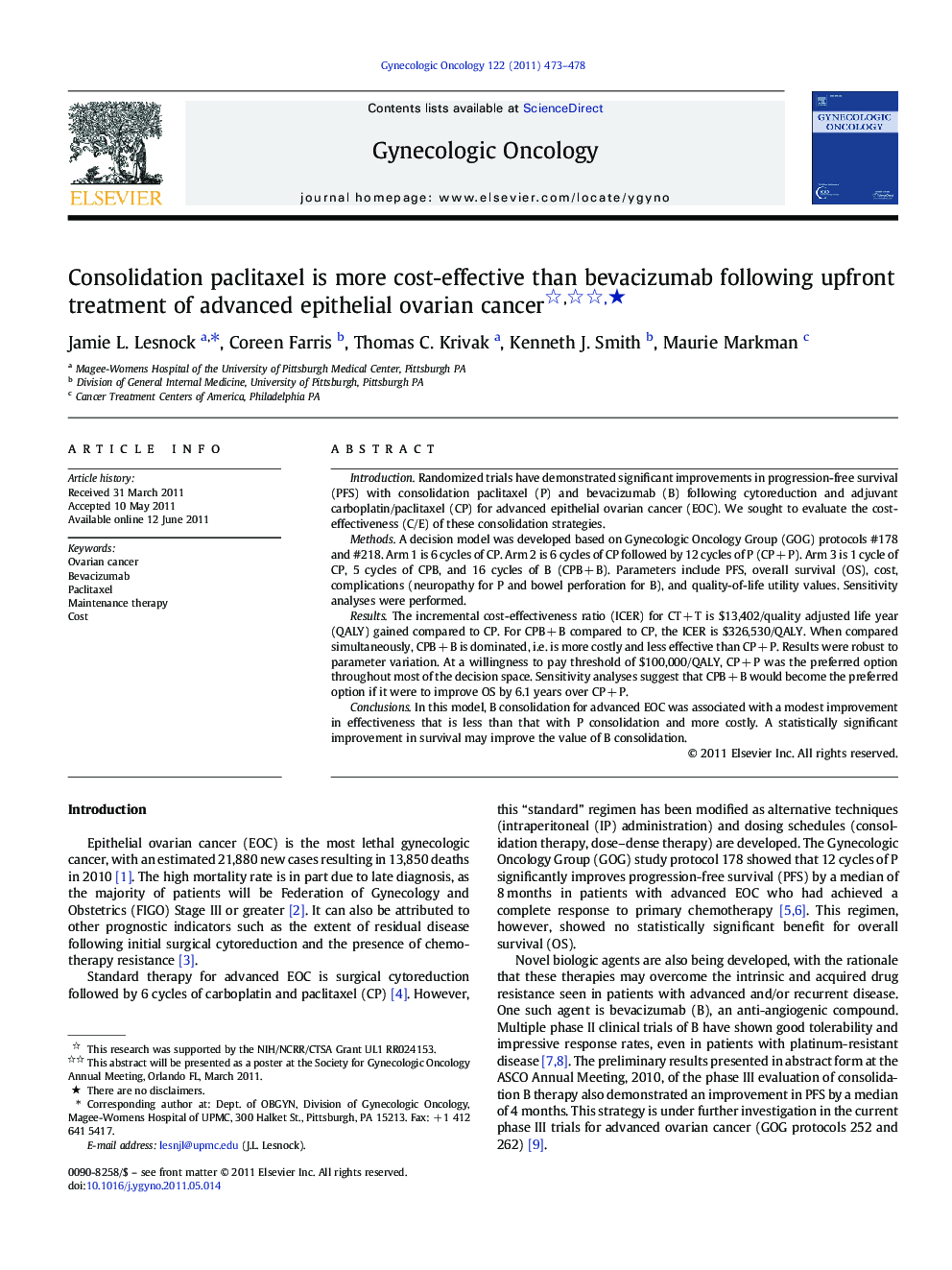| Article ID | Journal | Published Year | Pages | File Type |
|---|---|---|---|---|
| 3945552 | Gynecologic Oncology | 2011 | 6 Pages |
IntroductionRandomized trials have demonstrated significant improvements in progression-free survival (PFS) with consolidation paclitaxel (P) and bevacizumab (B) following cytoreduction and adjuvant carboplatin/paclitaxel (CP) for advanced epithelial ovarian cancer (EOC). We sought to evaluate the cost-effectiveness (C/E) of these consolidation strategies.MethodsA decision model was developed based on Gynecologic Oncology Group (GOG) protocols #178 and #218. Arm 1 is 6 cycles of CP. Arm 2 is 6 cycles of CP followed by 12 cycles of P (CP + P). Arm 3 is 1 cycle of CP, 5 cycles of CPB, and 16 cycles of B (CPB + B). Parameters include PFS, overall survival (OS), cost, complications (neuropathy for P and bowel perforation for B), and quality-of-life utility values. Sensitivity analyses were performed.ResultsThe incremental cost-effectiveness ratio (ICER) for CT + T is $13,402/quality adjusted life year (QALY) gained compared to CP. For CPB + B compared to CP, the ICER is $326,530/QALY. When compared simultaneously, CPB + B is dominated, i.e. is more costly and less effective than CP + P. Results were robust to parameter variation. At a willingness to pay threshold of $100,000/QALY, CP + P was the preferred option throughout most of the decision space. Sensitivity analyses suggest that CPB + B would become the preferred option if it were to improve OS by 6.1 years over CP + P.ConclusionsIn this model, B consolidation for advanced EOC was associated with a modest improvement in effectiveness that is less than that with P consolidation and more costly. A statistically significant improvement in survival may improve the value of B consolidation.
Research highlights► Paclitaxel is a more cost-effective consolidation option in advanced ovarian cancer. ► Consolidation Bevacizumab is not cost-effective for advanced ovarian cancer.
